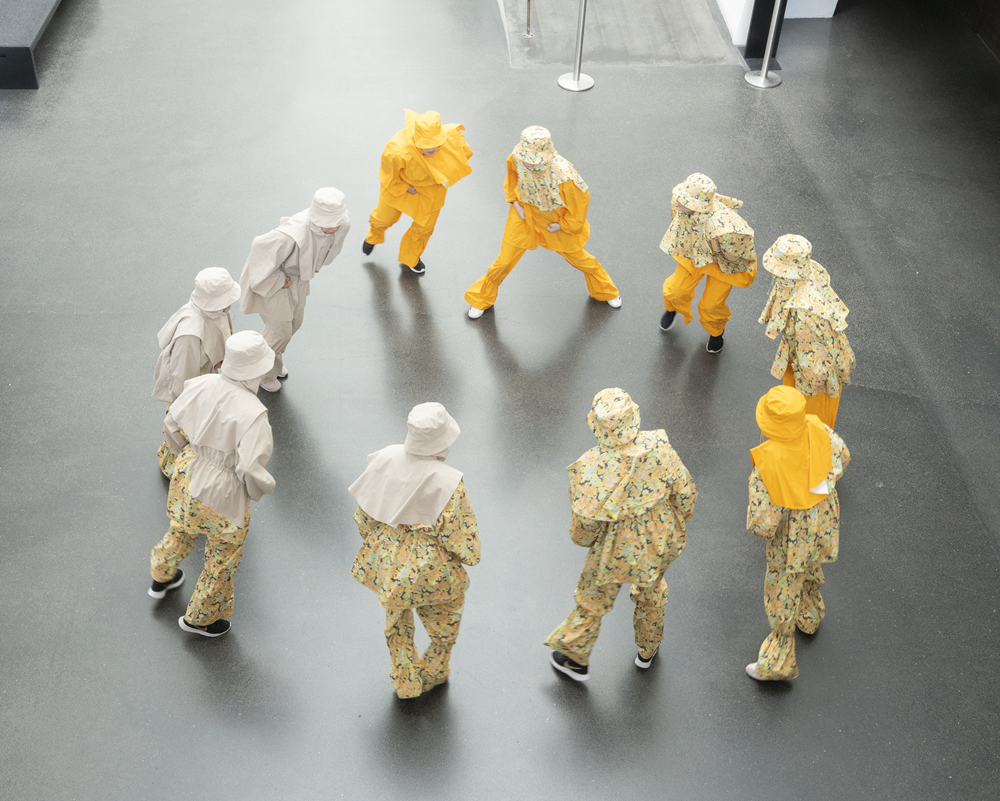
HORDE is a choreography shaped as a summer job, for nine teenagers between the age of 15 to 18, recruited and re-worked in each place you are showing the piece. Could you tell about your interest behind this work and the working process you are engaging in with the teenagers in each city?
A motivation for us was to create a project that has a political agenda through its modes of production, rather than working with an explicit political theme as subject matter. A central aspect has been to provide a job opportunity where the youths get to experience the inside workings of a choreographic process, which might nurture the idea of following a pathway towards art themselves, either as a career or as an audience.
We focus on developing tools and capacities amongst the participants, both on the level of work training, but also in the sense that the practice of the choreographic language in itself can provide skill sets that are useful in life at large.
Could you speak about stereotypes and expectations that you encounter during the rehearsals working with non-professionals coming from different backgrounds and educations?
This is the second time we realize this project with a new group of youths after the initial iteration in Oslo in 2021. During this process it has been necessary to develop new sets of pedagogical as well as choreographic tools. We have been challenged in relation to what types of dance materials could be the basis for the choreography, and how to work with creative contributions from youth with a variety of movement backgrounds. We have also been focusing on conveying choreographic principles as much as specific form or given steps, which for many of the youths has been a new approach to dance.
From the teenagers we got the feedback, that in their usual dance classes they normally learn to master a specific movement material in front of the mirror. Contrary to the work with HORDE, where movement material is mainly developed from tasks, not involving pre-existing forms. The teenagers described this as challenging and as a different approach. Departing from a non-frontal way of working, developing material through listening and trying out tasks and being together as a group, made them dare new things, leaded to new findings and more confidence, they said.
You are using costumes for the performance, that erase difference and potentially also gender. We are literally looking at a flock of teenagers performing together, without that one or the other is sticking out by appearance. What is your thinking behind it, in times, where the individual as such and specifically the individual appearance is highlighted more than ever, especially also through social media?
A central idea behind the choreography was that we wanted to create a community where an emphasis was on experiencing the power of being together and performing together in order to create the potential for change. An aspect of this was, as you suggest, to offer an alternative to individualized culture. The costumes created by Elnaz and Mathab Gargari became an important visual key to convey this idea.